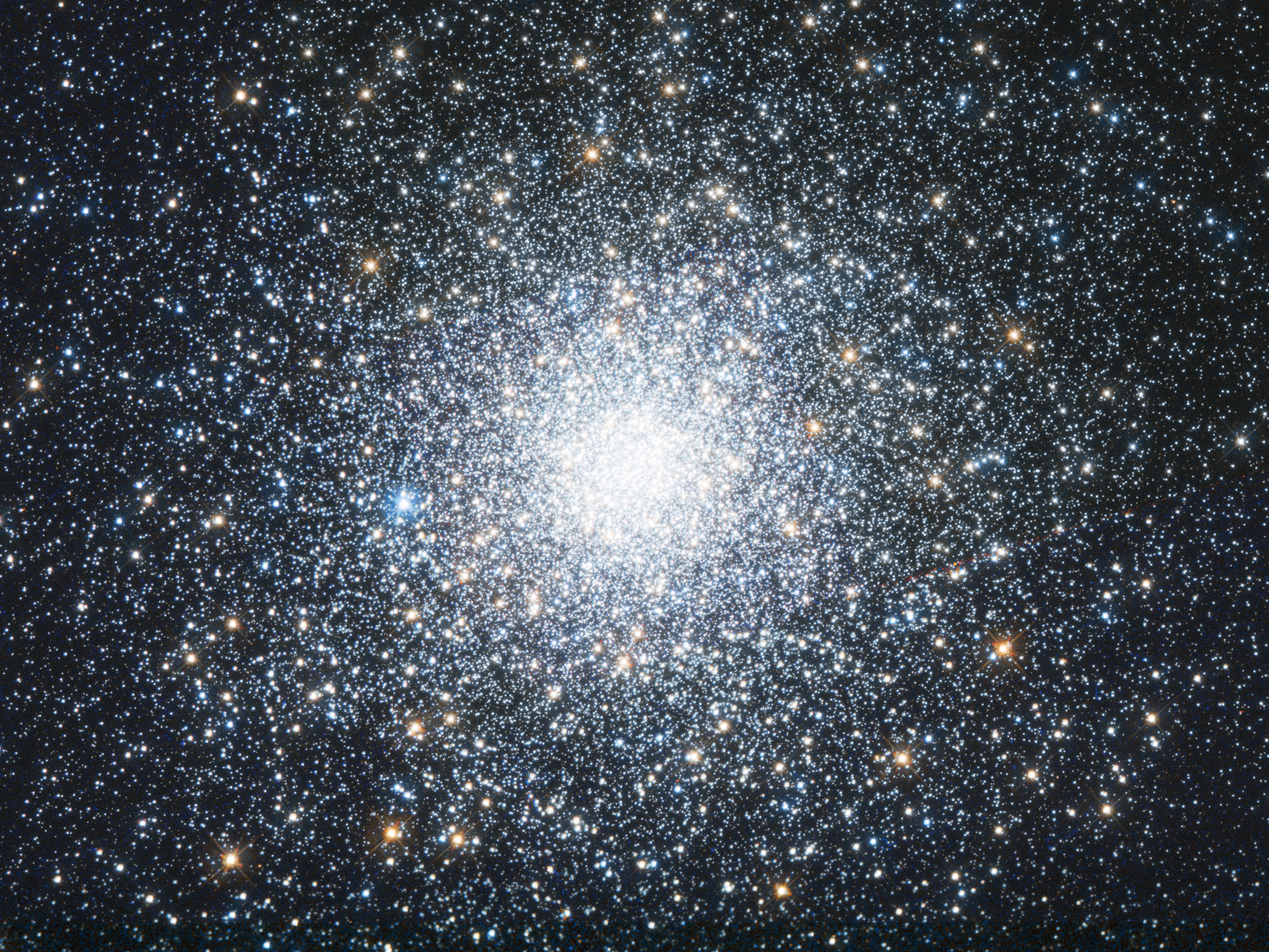
Globular Star Cluster M75
This beautiful image features the globular star cluster M75. Discovered in 1780 by Pierre Méchain, M75 was also observed by Charles Messier and added to his catalog later that year. M75 is the most centrally concentrated globular cluster in Messier's catalog, with the majority of its stars located in a large nucleus. In total, there are about 400,000 stars in the globular cluster. M75 is believed to be around 13 billion years old and sits approximately 67,500 light-years away from Earth. Located in the western part of Sagittarius, M75 has a magnitude of 8.6. The cluster is surprisingly easy to see in binoculars and telescopes thanks to it being extremely condensed in the center. However, because of its compact nature, M75 can barely be distinguished from a star when viewed in binoculars. Telescopes that are 10 inches across or larger are needed to resolve some of the stars in the cluster. August is the best month to observe M75. This Hubble image of M75 is a composite of observations taken in near-infrared and visible light using the Wide Field and Planetary Camera 2 and the Wide Field Camera 3. The image features the bright central core of M75 and its surrounding stars. The Hubble observations were made to help astronomers better understand the stellar populations in globular clusters and to investigate the clusters' potential for harboring central, intermediate-mass black holes (with approximately one hundred to one million times the mass of our Sun).
